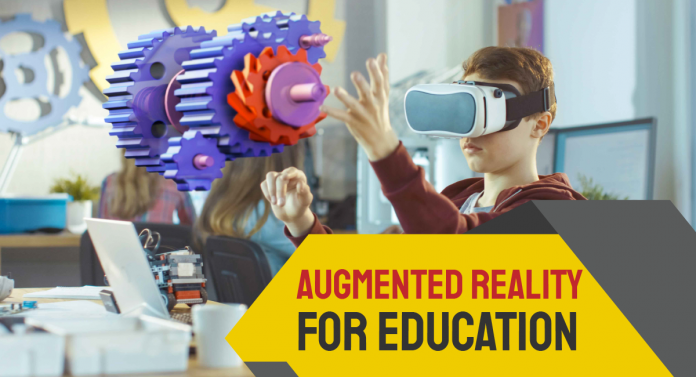There are numerous reasons why technology is critical to every aspect of our lives. From health, romance, business, and customer service experience education or to learning institutions.
The good news is that every time almost every aspect of our surroundings gets new technological advancements or inventions. And the education sector is not exceptional.
What’s even better for educators is the emergence of Augmented Reality (AR). This technological advancement features every aspect of learning you may need for quality education—talk of an incorporated virtual world that couples the natural world among other features.
Therefore, in this article, we’ve discussed some of the most significant impacts technology through augmented reality brings to learning institutions and classrooms.
First, let’s get to know more about AR.
What is Augmented Reality?
AR is the technology that superimposes the real and virtual worlds as digital content in the form of images, audio, graphics, or texts in real-time. Or can be defined as the real-time information in the form of text, audio, and other virtual enhancements.
In layman’s language, AR is simply the reality enhanced with the technology of some interactive digital components.
From the definitions, we can derive three major vital features of augmented reality;
- Combines real and virtual elements in a real environment
- Aligns both the real and virtual elements with each other for-
- Real-time interaction
What are some of the examples of AR?
The most commonly used augmented reality features are smartphones. And there is no doubt most learners can have access to phones.
I believe you have seen people activate their smartphone cameras to capture or view their surroundings (real-world). If you have, then you already know what AR entails.
But there’s more to that.
Once an individual captures or views the real world on their screens, they can have the opportunity to make it more appealing. They can do that by changing the settings of their camera to enhance their real-world through:
- Changing colors and inserting labels-talk of filters to change the appearance of the
- Adding images or videos to what they capture plus real-time directions.
These are all made more accessible by the provision of interactive apps like Instagram, Snapchat among others. Also, devices such as glasses, screens, handheld, and head-mounted displays can display the augmented reality.
Now that you know what AR entails, let’s find out how it impacts institutions.
How is Augmented Reality changing learning institutions?
Augmented reality facilitates easy interaction with the natural world while creating experiences that might not be possible in both the real and virtual worlds.
In other words, it helps bridge the gap between the virtual and real world.
Impacts of augmented reality on institutions
Facilitates efficient educative but engaging learning
You’ll agree with me that today learning has changed, and it’s not entirely based on chalk and board. And technology involved, AR learning is coupled with digital interactive elements like videos, audios, and images tune learning for creativity and engagement.
Like in virtual learning, visual presentations are a significant boost to a swift and effective AR learning system. As it allows learners to acquire or gain knowledge through immersing subject content into rich visuals. The visuals also facilitate students’ understanding and remembrance of contents. Sure, students tend to remember what they see or watch rather than what they read and write.
Lucky for them! With AR, they don’t only see but also have the participatory opportunity. A combination of recorded speech features, images, and videos in AR provides a better information gathering sense of learners. It keeps students more engaged throughout the lessons. This makes the learning process fun and effortless, giving edutainment.
Ensures better understanding of complex or abstract concepts
One best thing about AR is its power of visualization. And there is no doubt learners would gather and understand contents or concepts when they can visualize their reality. For the complex concepts to grasp, AR will help learners be accessible and visible, thus improving their understanding.
Something that is closely tied to visualization is an annotation which is a feature that comes with augmented reality. Annotation in AR guides learners to completion of tasks or assignments like in the cases of practical. For instance, learners during practical lessons would have their AR headset and glasses to provide them with information while they perform their roles.
Easy access to learning/training materials
Augmented reality can provide intense and hybrid anywhere, anytime learning materials to replace the physical models and textbook. Alternatively, it offers more portable and less expensive learning materials like exploiting video gaming elements that make it easy to access.
Therefore, with the required apps, learners would learn at different times and places of their choice from their smartphones.
Ensures an improved institutional collaboration
When working on assignments that involve teamwork, AR provides the best collaborative platform for learners or workers. AR would offer the best and new opportunities for students to work together while sharing ideas with the best apps.
Conclusion
Augmented reality is evolving the educational and institutional sectors making learning more efficient, collaborative, and engaging. Better still, it ensures easy access to learning materials and improves a better understanding of complex concepts through visualization.

